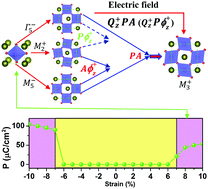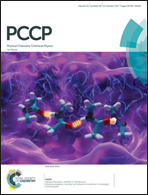Strain-induced ferroelectricity and lattice coupling in BaSnO3 and SrSnO3
Abstract
Perovskite stannates such as BaSnO3 and SrSnO3 exhibit promising photovoltaic properties, and hold promise for application in solar cell devices. However, the lack of ferroelectricity and the wide band gap in these materials limit their potential for photovoltaic applications. Here, by first-principles calculations, we demonstrate the realization of a primary ferroelectric polarization in non-ferroelectric BaSnO3 and SrSnO3 through strain engineering. In addition to the appearance of polarization, the band gaps of the materials are greatly narrowed when the paraelectric to ferroelectric phase transition takes place under compressive strain. Furthermore, an intriguing Q2 mode triggered by lattice coupling with the polar mode is found in the stannates subjected to a sufficient tensile strain and this mode has a significant effect on the band gap, which suggests another pathway to narrow the band gap through the electric field control of the Q2 mode. The fruitful electronic, structural, and energetic properties are discussed in detail to achieve a fundamental understanding of the strain-induced ferroelectricity, tunable band gap, and lattice couplings between the Q2 mode and different polar/rotational distortions in the perovskite stannates.



 Please wait while we load your content...
Please wait while we load your content...